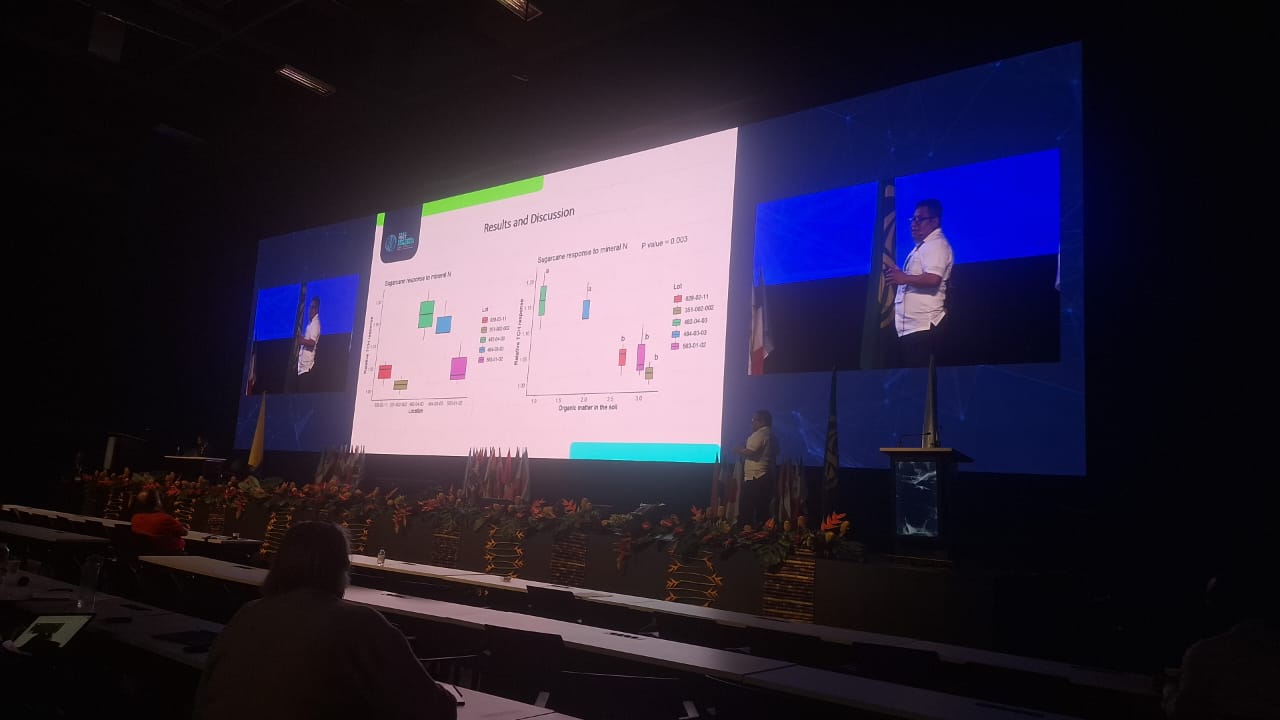Site-Specific Nitrogen Management: Guatemala’s Experience to Optimize Sugarcane Response

At the ISSCT Congress, researcher Carlos Vinicio Mazariegos Tello (Guatemala) presented advances in a program of site-specific nitrogen management in sugarcane, showing how science applied to the field can transform efficiency and reduce costs for producers.
The program begins with a planned application scheme: one soil sample is taken for every four hectares. These samples are analyzed in the laboratory to determine a key value (AVI filter), which is then used to classify fields according to their potential nitrogen response.
With these results, a spatial analysis was conducted, interpolating data and categorizing responses as high or low, depending on the hydroquinobinol AVI content. Based on this classification, nitrogen doses were adjusted instead of being applied uniformly, creating a more precise and cost-effective strategy.
Field Results
The study covered five representative localities. Yield graphs (TSH, tons of cane per hectare) revealed clear differences:
- Two sites showed very high responses to nitrogen,
- while three sites showed very low responses.
The explanation was found in the soil organic matter levels: the higher the organic matter, the lower the response to nitrogen application, revealing an inversely proportional relationship.
Implications for the Industry
These findings confirm that applying nitrogen uniformly across fields can be inefficient and costly. Site-specific management, on the other hand, allows for:
- Optimized fertilizer doses.
- Increased nitrogen use efficiency.
- Reduced production costs.
- Lower environmental impact.
According to Mazariegos, this system not only improves the economic performance of mills and farmers but also strengthens the agricultural sustainability of the region.
Conclusion
The work presented from Guatemala is a clear example of how precision agriculture can be integrated into sugarcane production. By better understanding the relationship between soils, organic matter, and nutrient response, the industry can move toward a more competitive and sustainable future.
